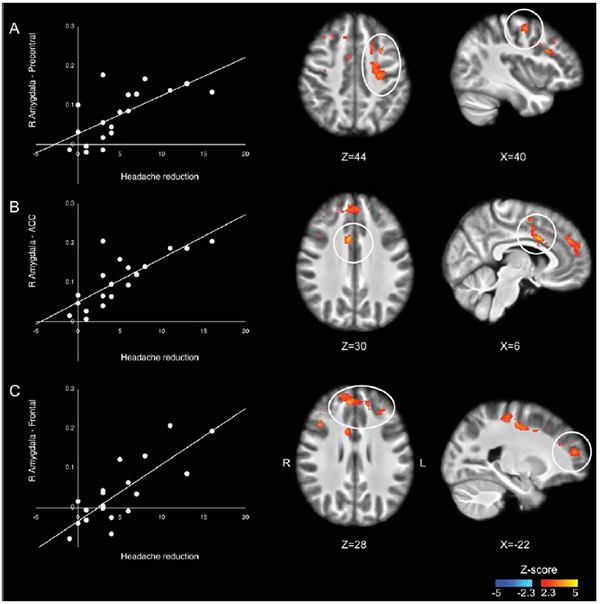Markers Predict Response to Cognitive Behavioral Therapy in Adolescents with Migraine
Published February 2021 | Pain
Migraine is one of the most common chronic pain conditions in children and adolescents, leading to challenges in academics, psychosocial functioning, and quality of life. While cognitive behavioral therapy (CBT) can help reduce pain, not all patients will show clinically meaningful benefits. Is there a way to predict which patients will respond to CBT?
Leveraging expertise in pain mechanisms and clinical management of migraine, researchers from the Divisions of Behavioral Medicine and Clinical Psychology and Neurology assessed the role of two potential mechanisms associated with improvements in pain following CBT in patients with migraine. They found that amygdalar connectivity and pain modulation capacity at baseline predict headache reduction in these patients.
For eight weeks, 20 study participants aged 10 to 17 years completed weekly CBT sessions. Researchers used functional magnetic resonance imaging to assess baseline brain function and amygdalar connectivity. Pain modulation capacity was assessed by conditioned pain modulation (CPM).
The team found a reduction in headache days after CBT, which was larger in patients with greater amygdalar connectivity and a less efficient pain modulatory response. These findings suggest that individual differences in brain function and pain modulation can be associated with clinical improvements, leading to personalized treatments for children and adolescents with migraine.
“This research supports the biological nature of CBT and the ability of a child or adolescent with migraine to change their biological propensity for having a headache,” says senior author Christopher King, PhD. “This could also direct more personalized approaches to increase the overall success of CBT.”
The team is currently building on this preliminary research to explore the neural and psychophysical mechanisms of CBT in two federally funded grants.
Amygdalar Connectivity Relates to Reduced Headache Frequency After Cognitive Behavioral Therapy

Positive correlations between headache frequency reduction after CBT and connectivity between the right amygdala and the following clusters: (A) Precentral cluster, which included the left precentral and the left postcentral gyrus; (B) ACC cluster, which included the right ACC, bilateral supplementary motor area, and the right precentral gyrus; and (C) frontal cluster, which includes bilateral frontal pole, bilateral paracingulate gyrus, bilateral superior frontal gyrus, and the right middle frontal gyrus.




